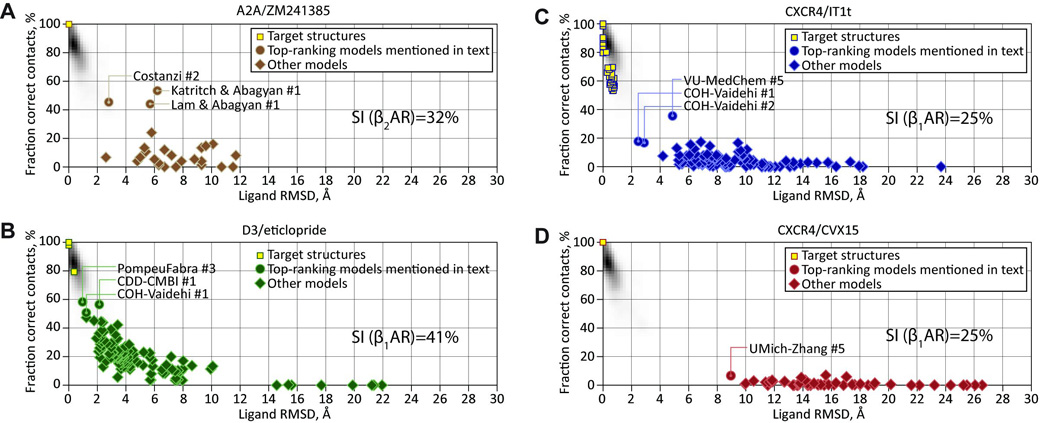Figure 4.

Community-wide prediction of GPCR-ligand docking and receptor interactions. In 2008 (A2AAR in complex with ZM241385) and 2010 (dopamine D3 in complex with eticlopride; CXCR4 chemokine in complex with IT1t and CVX15), two community wide assessments were conducted where the participants submitted prediction models of undisclosed GPCR ligand structures that were recently determined by the GPCR Network. The shaded plot background represents the distribution of the corresponding parameters for pairs of symmetry-related molecules in a subset of each PDB structure. (A) 2008 GPCR Dock8 with the assessment of the human A2AAR in complex with the antagonist ZM241385 highlighting limited success in receptor-ligand interactions. (B) 2010 GPCR Dock9 human dopamine D3 in complex with the antagonist eticlopride showing significant improvements in receptor-ligand docking, likely due to improved experimental models for the biogenic amine receptor subfamily. (C) 2010 GPCR Dock9 human CXCR4 receptor in complex with the small molecule IT1t. (D) 2010 GPCR Dock9 human CXCR4 receptor in complex with the peptide molecule CVX15. Panels A and B shows progress in the field based on available structural templates of related receptors, while panels C and D highlight the need for additional structural coverage needed for peptide receptors.
